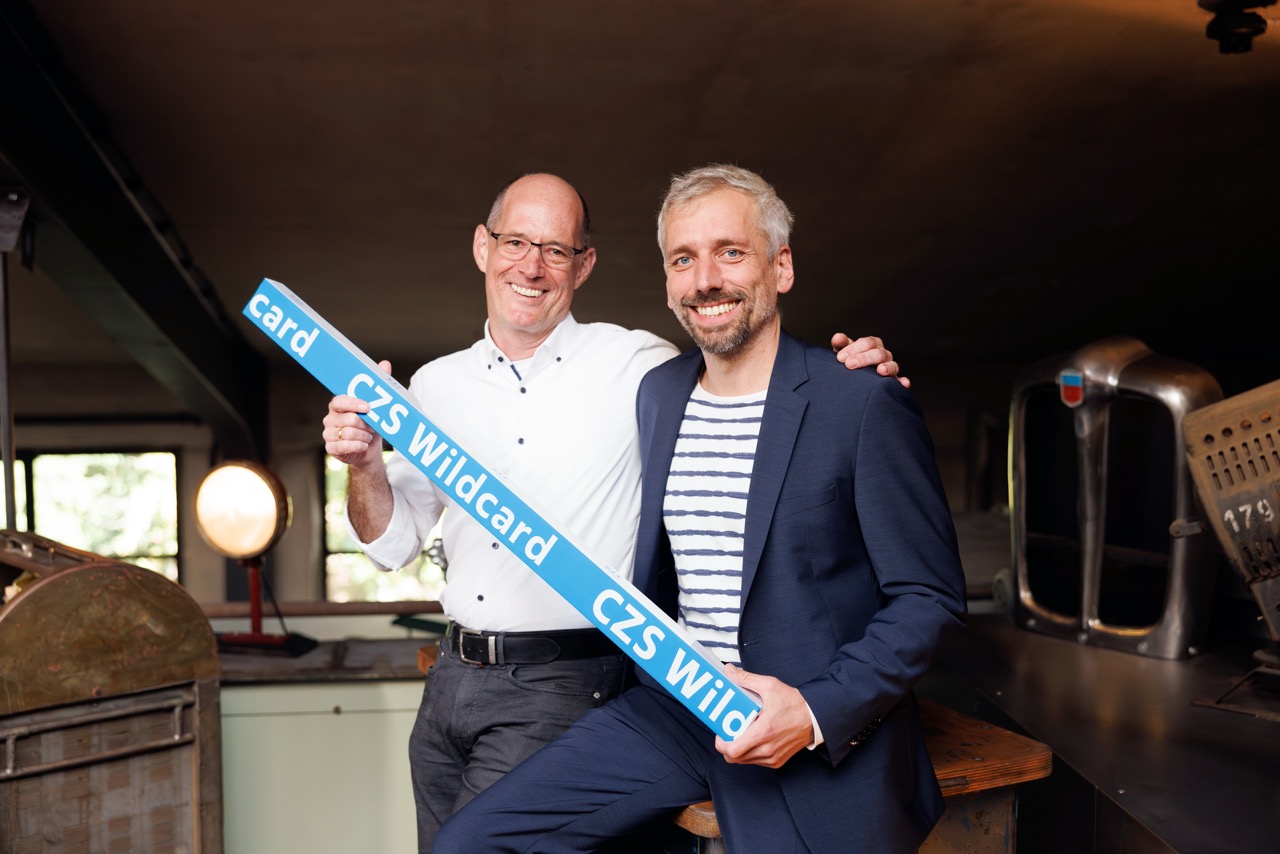The Crafting Futures research project aims to use Augmented Reality (AR) technology and generative Artificial Intelligence (AI) to make the often unseen impacts of climate change in urban spaces visible and immediately tangible. By embedding real-time and projected data visualizations into real-world environments, this project seeks to enable people to experience climate effects firsthand. Led by Hochschule Mannheim in collaboration with the University of Kaiserslautern-Landau (RPTU) and the German Research Center for Artificial Intelligence (DFKI), the initiative has secured €750,000 in funding from the Carl Zeiss Foundation for a two-year period.

Funding awarded for the ‘Crafting Futures’ project by the Carl Zeiss Foundation: Prof. Dr. Till Nagel, Hochschule Mannheim (right), and Prof. Dr. Martin Berchtold, RPTU, celebrating the success. (Photo: Carl Zeiss Foundation).
Flooding, heat waves, traffic gridlock: The way cities are designed and how we interact with them daily contribute significantly to these issues, amplifying climate impact and disrupting various urban systems. Research has thoroughly outlined how cities need to be transformed to remain livable—or even habitable—in the future, and this knowledge is readily available. By reshaping urban environments and changing daily behaviors, we could make a crucial impact on the causes and effects of climate change. People are especially quick to take action when they can see and feel the challenges firsthand.
“As long as the causes, effects, and interdependencies of climate change remain theoretical, little action is taken,” explains Prof. Dr. Till Nagel, project leader at the Human Data Interaction Lab, Hochschule Mannheim. “We know about CO₂ emissions from fossil-fuel mobility, but they’re invisible and intangible. Urban heat islands have been felt in recent years, but forecasts for 2040 remain theoretical. What if you could see the CO₂ emissions of circulating cars, today’s and future urban overheating, or the flood potential from extreme rainfall on your street—and anywhere in the city?”
Crafting Futures makes this possible with a novel approach. “On their smartphones, tablets, or via smart glasses, citizens can select perspectives like heat, heavy rain, or emissions,” says Dr. Martin Memmel, head of the SmartCity Living Lab at DFKI in Kaiserslautern. “AR technologies and intelligent aggregation and analysis of urban real-time and future data provide a novel experience, offering a profound understanding of critical but previously invisible dynamics,” Dr. Memmel adds. The system also allows users to interactively explore future scenarios. “Our goal is to let people experiment with urban planning changes in their environment using simple gestures. A generative AI realistically integrates these changes into the current landscape, making their effects on CO₂ emissions, temperature, and other factors immediately visible and experiential,” explains Dr. Martin Berchtold, Professor of Digitalization, Visualization, and Monitoring in Spatial Planning at RPTU. Crafting Futures thus creates a highly interdisciplinary fusion of scientific insight, mathematical modeling, and urban planning strategies.
The Carl Zeiss Foundation (CSZ) is funding this research project with €750,000 under the “CZS Wildcard” program, which supports unconventional research ideas by interdisciplinary teams. Prof. Dr. Till Nagel, Professor of Visual Analytics and head of the Human Data Interaction Lab (HDIL) at Hochschule Mannheim, serves as the project leader.
Link to press release by the Mannheim University of Applied Sciences (in German).